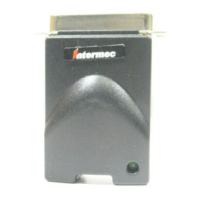EasyLAN 10i2 Ethernet Adapter User’s Manual
viii
Format Conventions for Input From a Keyboard or Keypad
This table describes the formatting conventions for input from PC or host computer
keyboards and device keypads:
Convention Description
Special
text Shows the command as you should enter it into the device. See
“Format Conventions for Commands” later in this section.
Italic
text Indicates that you must replace the parameter with a value. See
“Format Conventions for Commands” later in this section.
Bold
text
Indicates the keys you must press on a PC or host computer
keyboard. For example, “press
Enter
” means you press the key
labeled “Enter” on the PC or host computer keyboard.
Format Conventions for Commands
This manual includes sample commands that are shown exactly as you should type
them on your device. The manual also describes the syntax for many commands,
defining each parameter in the command. This example illustrates the format
conventions used for commands:
Type the following command:
arp -s
nnn.nnn.nnn.nnn nn-nn-nn-nn-nn-nn
ping
nnn.nnn.nnn.nnn
arp -d
nnn.nnn.nnn.nnn
where:
nnn.nnn.nnn.nnn
is the IP address for the EasyLAN 10i2 adapter
nn-nn-nn-nn-nn-nn
is the MAC address for the EasyLAN 10i2 adapter
This table defines the conventions used in this manual:
Convention Description
Special
font Commands appear in this font. You enter the command exactly as it
is shown.
Italic
text Italics indicate a variable, which you must replace with a real value,
such as a number, filename, or keyword.
[ ] Brackets enclose a parameter that you may omit from the command.
Do not include the brackets in the command.
Required
parameters
If a parameter is not enclosed in brackets [ ], the parameter is
required. You
must
include the parameter in the command;
otherwise, the command will not execute correctly.
where This word introduces a list of the command’s parameters and
explains the values you can specify for them.

